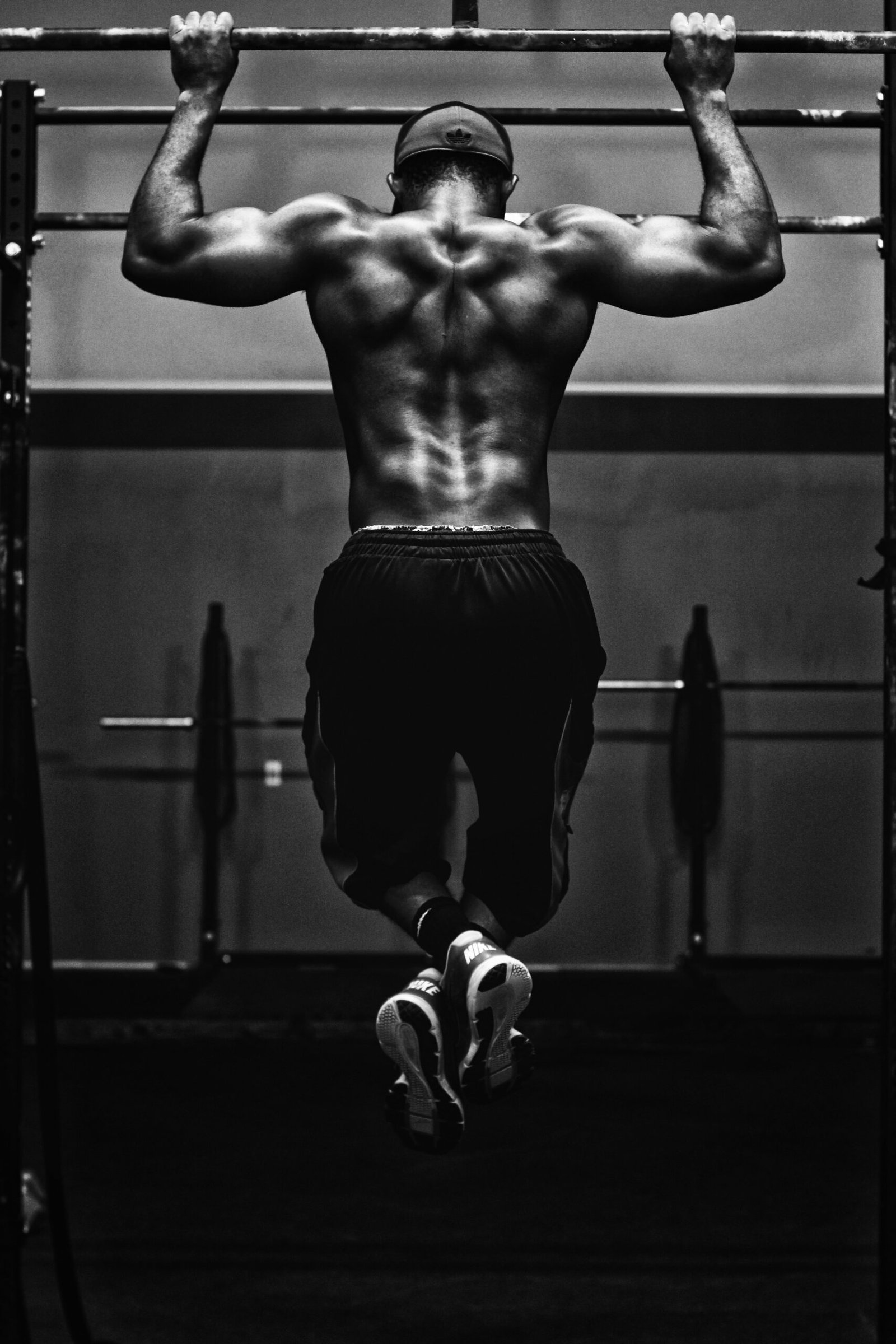
Introduction to Back and Biceps Training
Training the back and biceps together is a highly effective strategy for anyone looking to enhance their overall strength and achieve a well-defined physique. This combined workout approach not only targets key muscle groups but also brings a multitude of benefits that are crucial for both beginners and advanced fitness enthusiasts.
One of the primary advantages of back and biceps training is improved posture. The back muscles, including the latissimus dorsi, rhomboids, and trapezius, play a significant role in maintaining proper posture. Strengthening these muscles helps in counteracting the effects of prolonged sitting and poor ergonomic habits, which are common in today’s lifestyle. Enhanced pulling strength is another benefit. The back and biceps are involved in various pulling movements, and training them together can lead to better performance in exercises such as pull-ups, rows, and deadlifts.
Additionally, a well-rounded back and biceps workout contributes to a more balanced physique. The biceps brachii, along with the brachialis, are the primary muscles in the upper arm responsible for elbow flexion. When these muscles are trained in conjunction with the larger back muscles, it leads to more harmonious muscle development. This balance not only looks aesthetically pleasing but also reduces the risk of muscular imbalances that can lead to injuries.
In summary, incorporating a well-structured back and biceps workout into your routine is essential for achieving a strong and defined upper body. Whether you are a beginner aiming to build a solid foundation or an advanced lifter looking to refine your physique, this training approach offers substantial benefits. By focusing on these critical muscle groups together, you can optimize your workout efficiency and pave the way for long-term fitness success.
Key Exercises for Back Development
Building a strong and well-defined back is fundamental for overall strength and athletic performance. Key exercises that target the back muscles are essential for achieving this goal. Below, we delve into the essential exercises for back development: pull-ups, bent-over rows, deadlifts, and lat pulldowns. Proper form and technique are crucial for maximizing effectiveness and minimizing the risk of injury.
Pull-Ups: Pull-ups are a compound exercise that primarily targets the latissimus dorsi, biceps, and upper back muscles. To perform a pull-up, grip the pull-up bar with your palms facing away from you, hands shoulder-width apart. Hang with your arms fully extended, then pull your chest towards the bar, ensuring your elbows stay close to your body. Lower yourself back to the starting position in a controlled manner. Beginners can use resistance bands for assistance, while advanced athletes can add weight for increased difficulty.
Bent-Over Rows: This exercise effectively targets the middle back, lats, and rhomboids. Begin by holding a barbell or dumbbells with a pronated grip, feet shoulder-width apart. Bend at the hips and knees slightly, keeping your back straight and core engaged. Pull the weight towards your torso, squeezing your shoulder blades together at the top of the movement. Lower the weight back to the starting position. Variations include single-arm dumbbell rows and T-bar rows, which can be adjusted for different fitness levels.
Deadlifts: Deadlifts are a full-body exercise that primarily engages the lower back, glutes, and hamstrings. Stand with your feet hip-width apart, grip the barbell with hands just outside your knees. Keep your back straight and chest up as you lift the bar by extending your hips and knees simultaneously. Lower the bar back to the ground by reversing the movement. Variations include sumo deadlifts and Romanian deadlifts, which target different muscle groups and can be modified based on experience levels.
Lat Pulldowns: Lat pulldowns isolate the latissimus dorsi and are a great alternative to pull-ups. Sit at the lat pulldown machine, grip the bar wider than shoulder-width with your palms facing forward. Pull the bar down towards your chest, keeping your back straight and elbows pointed down. Slowly return the bar to the starting position. Adjust the weight to match your fitness level and consider variations like underhand lat pulldowns for different muscle engagement.
Incorporating these exercises into your weekly routine can be done by structuring your workouts to include compound movements on different days. For example, performing pull-ups and bent-over rows on one day, and deadlifts and lat pulldowns on another, ensures balanced muscle development and adequate recovery time. Always prioritize proper form and gradually increase intensity to prevent injury and promote progressive strength gains.
Effective Biceps Exercises
Building and defining the biceps requires a combination of effective exercises, proper form, and progressive overload. Among the top exercises to sculpt your biceps are barbell curls, hammer curls, and concentration curls. Each of these exercises targets different parts of the biceps, ensuring comprehensive development and strength gains.
The barbell curl is a fundamental biceps exercise that primarily works the biceps brachii. To perform it correctly, stand with your feet shoulder-width apart, grip the barbell with an underhand grip, and curl the weight towards your chest while keeping your elbows close to your body. Avoid swinging the barbell or using momentum, as this can lead to improper form and potential injury.
Hammer curls, on the other hand, target both the biceps brachii and the brachialis, contributing to overall arm thickness. Hold a dumbbell in each hand with a neutral grip (palms facing your torso) and curl the weights while keeping your elbows stationary. This exercise not only enhances biceps strength but also improves grip strength due to the neutral hand position.
Concentration curls are excellent for isolating the biceps and ensuring maximum muscle engagement. Sit on a bench with your legs spread, hold a dumbbell in one hand, and rest your elbow on the inside of your thigh. Curl the weight towards your shoulder, focusing on a slow and controlled movement. This exercise helps to eliminate the use of momentum, allowing for better muscle isolation and contraction.
To achieve continual growth, it is crucial to progressively overload the biceps. Gradually increase the weight, repetitions, or sets as your strength improves. This approach stimulates muscle adaptation and growth, preventing plateaus in your training.
Integrating these exercises into your overall workout plan is essential for balanced development. Pairing biceps exercises with back exercises ensures that both muscle groups are equally worked, reducing the risk of muscle imbalances. For instance, combining barbell rows or pull-ups with biceps curls in a single session can create a well-rounded workout that promotes both strength and definition.
By incorporating barbell curls, hammer curls, and concentration curls into your routine, and adhering to proper form and progressive overload principles, you can effectively build and define your biceps. Balancing your biceps training with back exercises will further enhance your overall upper body strength and aesthetics.
Creating a Balanced Back and Biceps Workout Routine
Designing a balanced back and biceps workout routine is essential for achieving strength and definition. A well-structured plan ensures that both muscle groups are targeted effectively, promoting muscular balance and reducing the risk of injury. Here, we provide sample workout plans for different fitness levels, including the number of sets, reps, and rest periods, along with key tips on rest, recovery, and nutrition.
Beginner Workout Plan
For beginners, start with basic exercises to build a strong foundation. Perform the following routine twice a week:
Exercises:
1. Lat Pulldown: 3 sets of 10-12 reps
2. Seated Row: 3 sets of 10-12 reps
3. Dumbbell Bicep Curl: 3 sets of 12-15 reps
4. Hammer Curl: 3 sets of 12-15 reps
Rest: 60-90 seconds between sets
Intermediate Workout Plan
For those with some experience, increase the intensity and variety of exercises. Perform this routine three times a week:
Exercises:
1. Pull-Ups: 4 sets of 8-10 reps
2. Bent-Over Barbell Row: 4 sets of 8-10 reps
3. T-Bar Row: 4 sets of 8-10 reps
4. EZ Bar Curl: 4 sets of 10-12 reps
5. Concentration Curl: 4 sets of 10-12 reps
Rest: 60 seconds between sets
Advanced Workout Plan
For advanced individuals, incorporate more complex movements and higher volume. Perform the following routine four times a week:
Exercises:
1. Deadlift: 5 sets of 5 reps
2. Weighted Pull-Ups: 5 sets of 6-8 reps
3. Single-Arm Dumbbell Row: 5 sets of 6-8 reps
4. Preacher Curl: 5 sets of 8-10 reps
5. Cable Curl: 5 sets of 8-10 reps
Rest: 45-60 seconds between sets
Importance of Rest and Recovery
Rest and recovery are crucial components of any workout routine. Muscles grow and repair during rest periods, so ensure you are getting 7-9 hours of sleep per night and including rest days in your weekly schedule. Stretching and foam rolling can also aid in muscle recovery and flexibility.
Nutrition Tips for Muscle Growth
Proper nutrition is vital to support muscle growth. Aim for a balanced diet rich in protein, healthy fats, and complex carbohydrates. Protein sources like lean meats, eggs, and legumes help repair and build muscle tissues. Stay hydrated and consider supplementation with protein shakes or amino acids if needed.
Tracking Progress
Tracking your progress is important to ensure you are moving towards your fitness goals. Keep a workout journal to note down exercises, sets, reps, and weights used. Regularly assess your progress by taking measurements or photos, and adjust your routine as necessary to continue making gains.
Consistency and proper technique are key to achieving the best results in your back and biceps workout. By following these structured plans and keeping track of your progress, you can effectively build strength and muscle definition over time.


